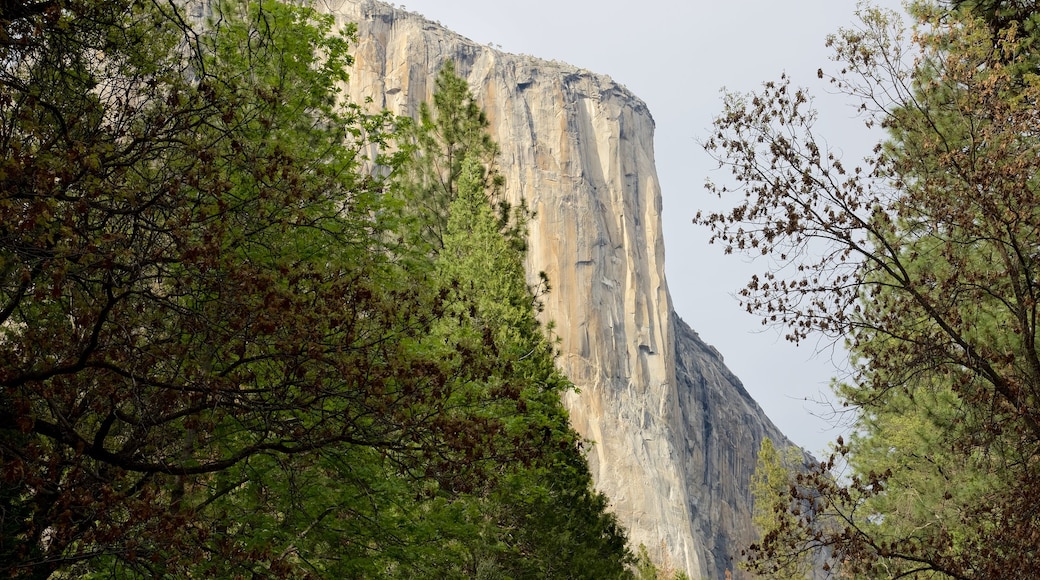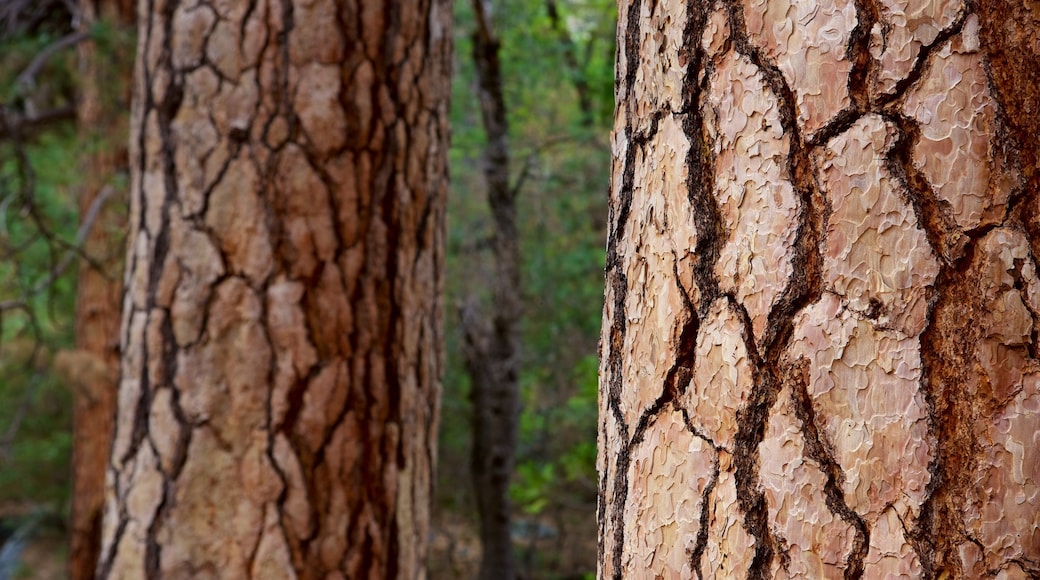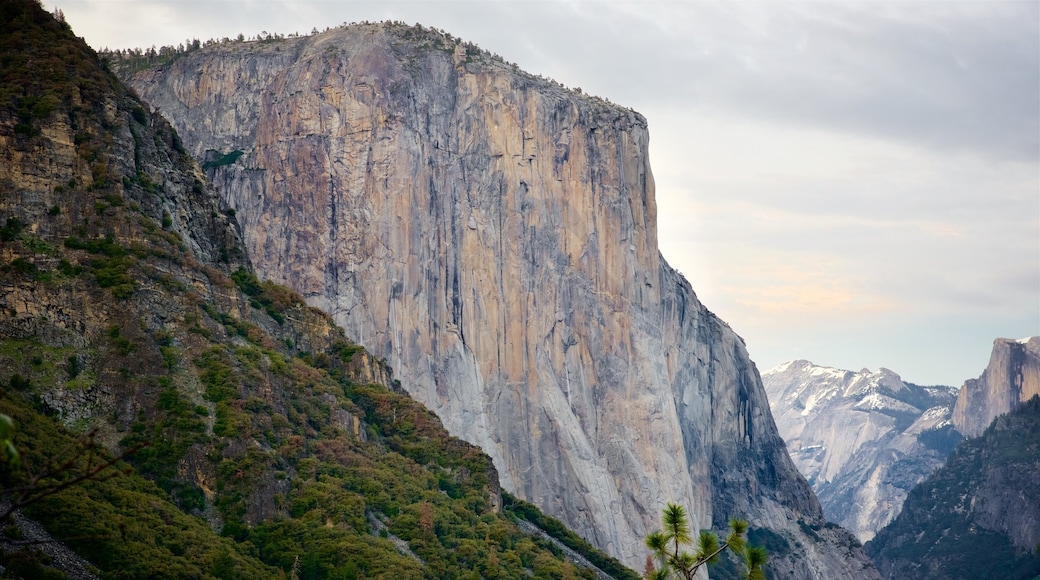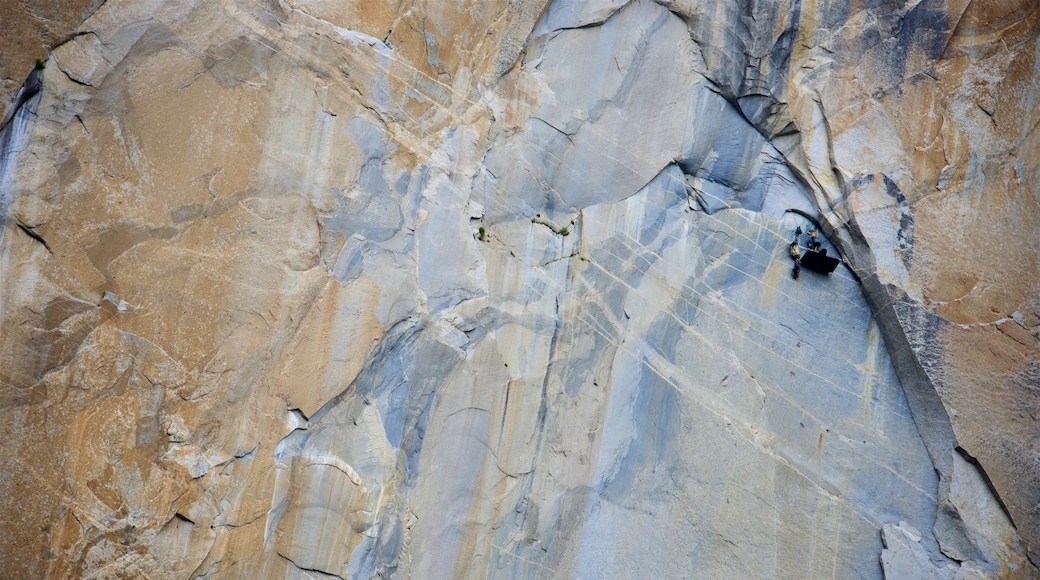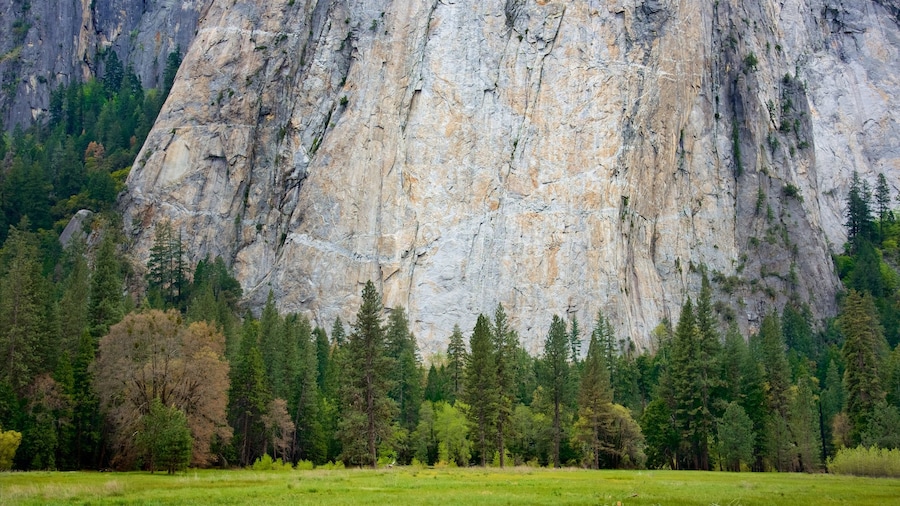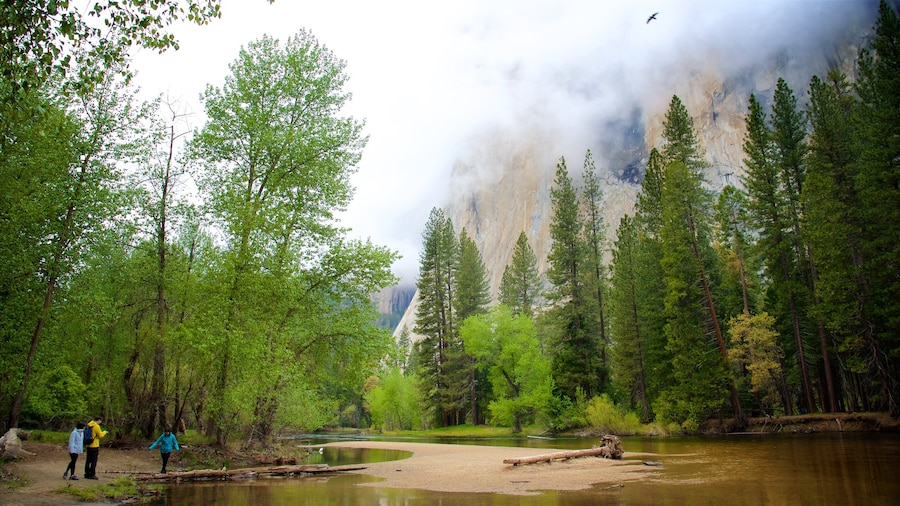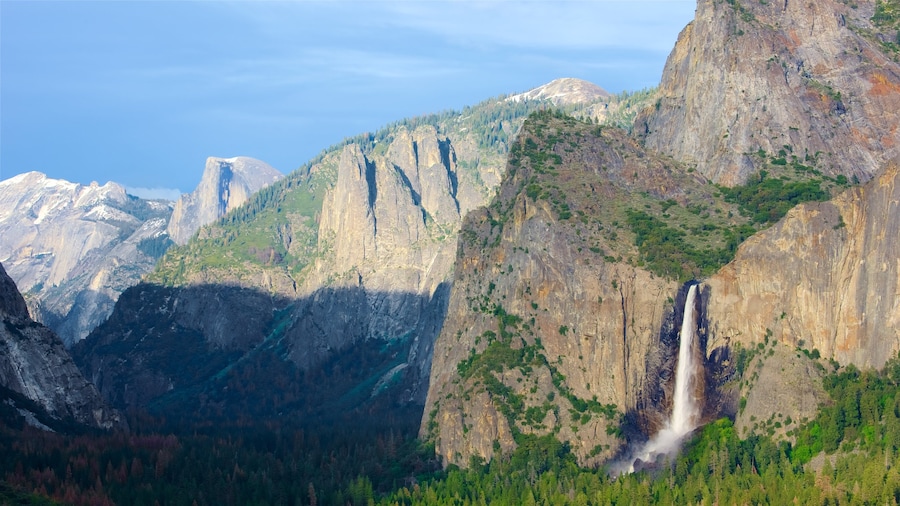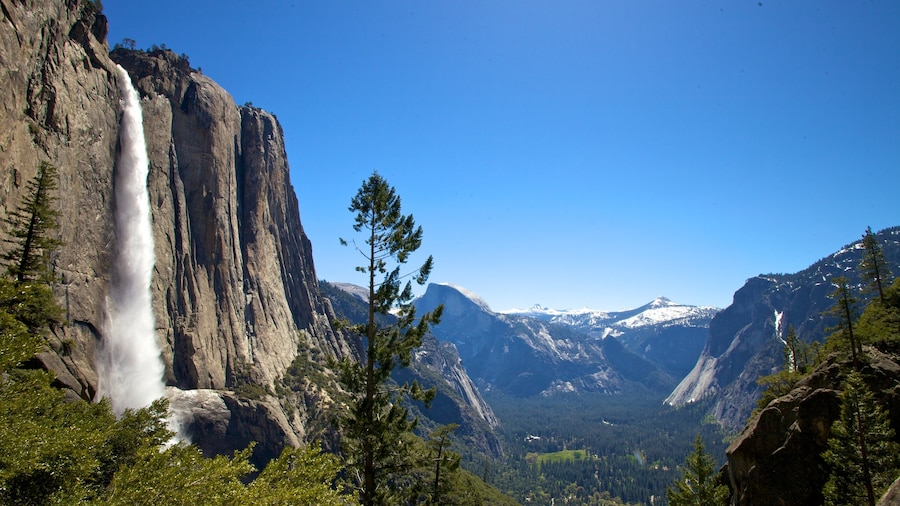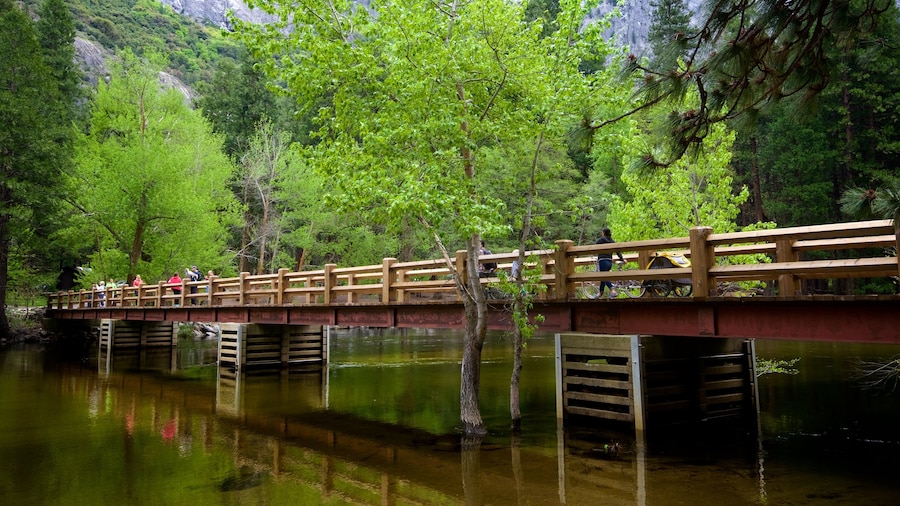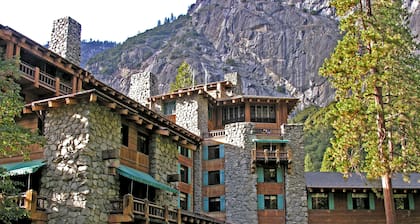El Capitan is one of Yosemite National Park’s best-known features, rising sharply from the valley floor in a spectacular precipitous formation. Translating to “the captain” in Spanish, El Capitan looks out over the magnificent valley and dares rock climbers and hikers to reach its dizzying peaks. See the mesmerizing rock face from one of several roads that wind through the western part of Yosemite Valley or grab your climbing equipment and tackle “El Cap” yourself.
The sheer cliff face of El Capitan stands opposite the magnificent mists of Bridalveil Fall. Drive along the roads that connect Tunnel View, El Capitan Meadow and the Bridalveil Fall area to get clear views of Yosemite’s chief peak and the climbers scaling its face. Rising over 3,000 feet (900 meters) from its base, the granite monolith’s tallest face is easy to identify from the length of the valley. The Mariposa Battalion gave the formation its name while exploring the valley in 1851. The local Native American name for the formation translates to “Rock Chief” or “Captain,” inspiring the Spanish name.
Photograph the precipice and capture the sunlight as it reflects off the rock face. Sunset is a popular time for photographers in this colossal landscape, when the colors of the sunlight cast red and orange hues across the granite sentinel.
Reach El Capitan’s base by hiking out of Yosemite Valley on the trail that heads west from Yosemite Falls. Keen rock climbers have long heralded El Capitan as one of the world’s greatest challenges. If you are an experienced climber, bring your gear and tackle one of the climbing routes ascending the sheer granite face. If not, use binoculars to view climbers on the southwest and southeast faces.
El Capitan is located in the valley’s western section at the center of Yosemite National Park. See the magnificent peak as you drive along one of several scenic routes that pass through the soaring valley. Visit in summer to see the stark contrast of the blue sky above the pale rock or check out the views in winter when snow dusts the formation’s nose.
